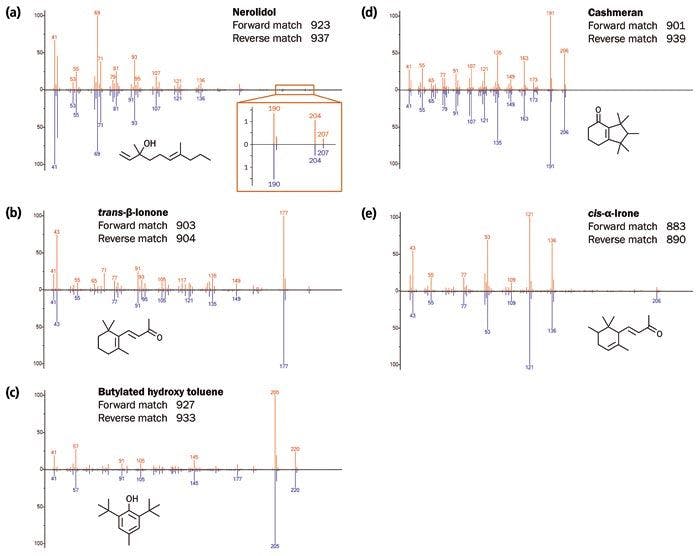Eight Steps to Better Results from Solid-Phase Extraction
LCGC Blogger Tony Taylor presents his eight steps for improving your solid-phase extraction (SPE) results.
LCGC Blogger Tony Taylor presents his eight steps for improving your solid-phase extraction (SPE) results.
(Photo Credit: Alex Belomlins/Getty Images)

For some reason I’ve been involved in several troubleshooting scenarios recently in which the issues have been traced to non-optimized solidâphase extraction (SPE) protocols. If you use SPE in your work, then most likely it’s very important to the success of your applications and its proper implementation will be key to the performance of your analyses. However, SPE protocols are “variable in quality” (I’ve been as I kind as I can there!) and this variability appears to come from some common issues, misunderstandings, and, frankly, ignorance of the mechanisms that are in play. So - if you are interested in developing a better understanding of the technique, to improve your analyses and generally make you a better person, then read on, and follow these eight steps. I am confident you will get better results from your SPE processes if you do.
1. Know your Sorbents
Mixed-mode separations are the key to cleaner extracts. Broadly, SPE sorbent selection follows the same rules as high performance liquid chromatography (HPLC) in terms of matching the hydrophobicity of the analyte, but you should also be aware that more polar sorbents, those capable of hydrogen bonding and finally those capable of electrostatic interaction (ionâexchange) with the analyte are increasingly more selective, and therefore result in increasingly cleaner extracts. There are both silica and polymer sorbents with ionâexchange characteristics that can be used to fine-tune the surface for optimum selectivity during the wash step. The cleanest extracts can be obtained using a silica-based sorbent with a weak ion exchanger where I can “flip” the retention mechanism during the wash phase from hydrophobic to electrostatic and back again, if required, and I can do this by manipulating the surface charge as well as that of any ionizable analyte moieties. The use of “generic-protocols” should be avoided because they are often a “catchâall” approach in which broad and less specific mechanisms are used to ensure no analytes are allowed to break through during sample loading. One should attempt in all cases to understand the chemistry of your analyte and the sorbent choice based on the possibility of strongest to weakest interactions. That is, if your analyte is capable of electrostatic interaction, then use it. Hydrogen bonding, polar, and hydrophobic interactions are then considered in that order. In this regard, it is always beneficial to know something of the analyte - structure, logD (LogP), and pKa values are all valuable in designing or implementing an optimized extraction protocol.
2. Condition and Equilibrate to Stop Breakthrough
With silica sorbents, conditioning ensures that the phase is “activated or wetted” and will have maximum capacity for the analyte. This is typically achieved by washing with methanol, followed by water. Equilibration matches the sorbent environment with that of the sample solution in terms of eluotropic and ionic strength. To stop analyte breakthrough, and help achieve minimum elution volumes, match the equilibrating solvent as closely as possible to the analyte. When using ion-exchange sorbents, ensure that the counter ion associated with the sorbent can be displaced by the analyte (hydrogen ions may typically be used in this regard), and adjust the pH of the conditioning solvent to 2 pH units above the sorbent p
K
a
of weak-cation exchanger or 2 pH units below the p
K
a
of weak anion exchange ligand.
3. Be Brave with Wash and Elution Solvent Strength
It is easy to be overly cautious during the sorbent washing protocol step to avoid loss of analyte - however, this will obviously result in a dirtier extract than is necessary. It is important to properly understand the relationship between the analyte and the stationary phase to optimize the strength of the wash solvent to remove as many interferents as possible while still retaining the analytes. This is typically done by titrating the eluotropic or ionic strength or by adjusting the pH to suppress the ionization of the stationary phase or analyte, or by increasing the strength of the counter ion to disrupt analyte/sorbent interactions. Titrating (increasing in a stepwise fashion) the strength of the wash solvent and analyzing the eluate for key interferents and analytes will enable the optimum wash strength to be identified and, while the eluate may be dirtier than ideal, this process is worth undertaking to properly characterize the behaviour of analytes and interferents.
4. Use the STRONGEST Wash Solvent Possible While Still Retaining the Analyte
Exactly the opposite can be said of the elution step in most SPE protocols and folks tend to be over cautious and use a very strong elution solvent, in fear of not eluting the analyte. Again, a titration of the elution solvent will identify the WEAKEST solvent strength and correct pH to elute the analyte but leave any intereferents behind on the sorbent. One caveat here is that we should balance the elution protocol solvent strength with the volume of solvent required to elute the analytes.
5. Choose the Right Sorbent Mass
The capacity of silica-based phases is around 5–10% of the sorbent mass (per analyte) and polymers show around 20–25% capacity - so this should be enough for you to judge the sorbent mass that you need. Also remember that narrower longer beds suffer less breakthrough but need larger elution volumes.
6. Process at the Right Speed
Hydrogen bonding and electrostatic mechanisms are “point to point” and as such the analytes take longer to orient themselves with the surface species, which means that we need to process the solvents at a slower speed. Typical processing speeds are around 1 mL/min; however, when using point to point retention mechanisms, one may need to drop to as little as 100 mL/min to ensure useful recovery. See below for the possibility of using soak steps.
7. Use Soak Steps
Soak steps involve holding a solvent stationary within the sorbent to allow processes, which are slow to equilibrate, or when loading into a dried sorbent bed, or to allow the solvent to penetrate the fine pore structure of silicaâbased solvents. Typically used during solvent loading or elution or when switching between immiscible solvents, soak steps lasting 1 to 5 min can really help to improve recovery and reproducibility.
8. Take Advantage of Drying Steps
Drying steps are typically used when switching between organic and aqueous solvents that are less miscible. The application of high levels of vacuum after a protocol step is used to drive all remaining solvent from the sorbent matrix and helps to avoid very slow equilibration in instances where, for example, residual aqueous solvents in the fine pore structure of the sorbent exclude an organic solvent used in the next protocol step. Again, these steps typically improve recovery and reproducibility.
For a full multi-media explanation of all of the above points as well as tutorials on SPE method development and troubleshooting – see CHROMacademy. http://www.chromacademy.com/sample-prep-training.html
For more information, contact either Bev (bev@crawfordscientific.com) or Colin (colin@crawfordscientific.com). For more tutorials on LC, GC, or MS, or to try a free LC or GC troubleshooting tool, please visit www.chromacademy.com

The LCGC Blog: Historical (Analytical) Chemistry Landmarks
November 1st 2024The American Chemical Society’s National Historic Chemical Landmarks program highlights sites and people that are important to the field of chemistry. How are analytical chemistry and separation science recognized within this program?







